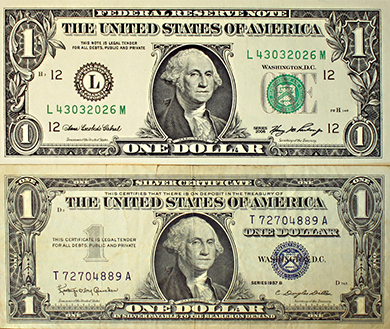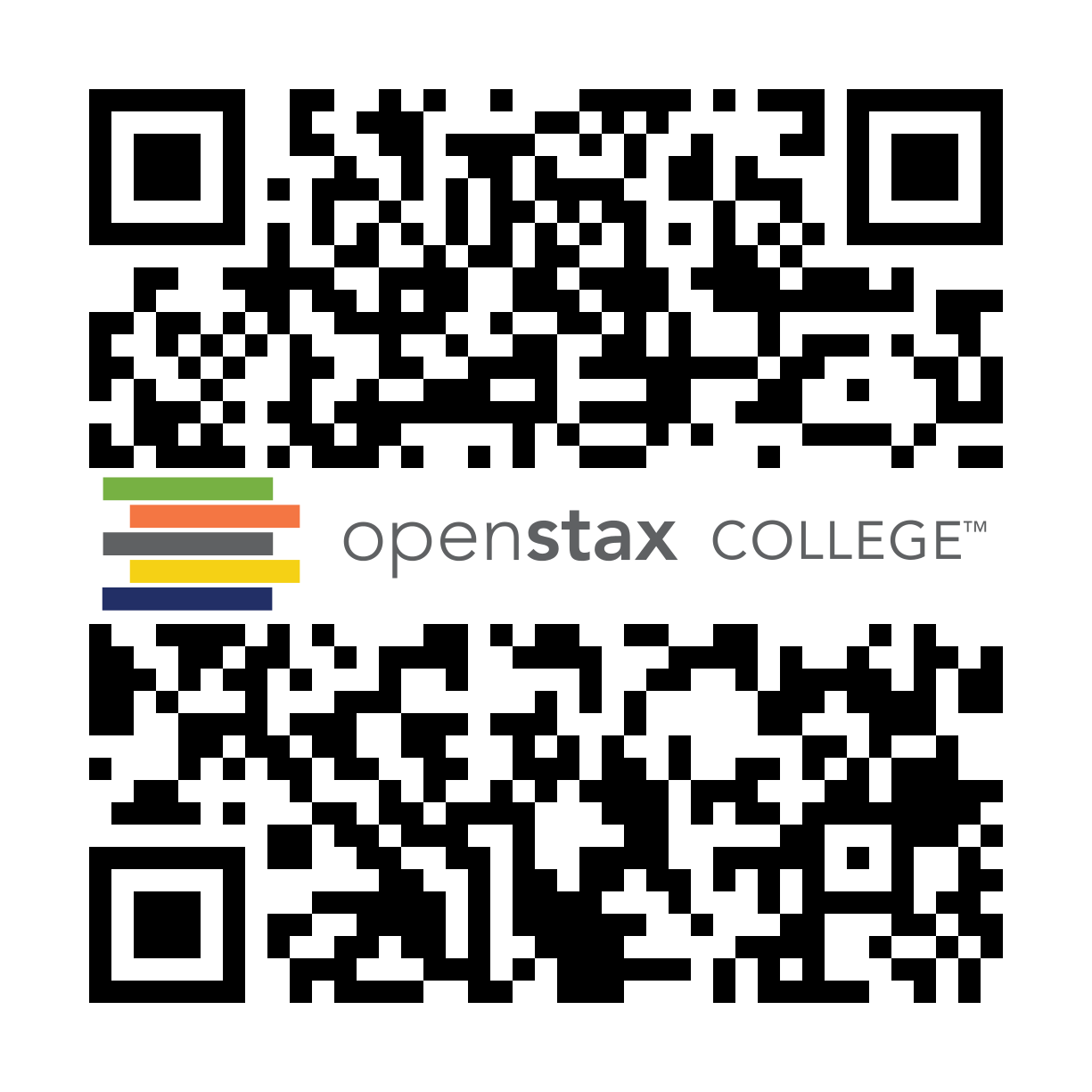What Are The Three Conditions That Gold Meets To Be Used As Money?
Chapter 27. Money and Banking
27.1 Defining Money by Its Functions
Learning Objectives
By the end of this department, you will exist able to:
- Explain the various functions of money
- Contrast commodity money and fiat money
Money for the sake of money is not an end in itself. Y'all cannot eat dollar bills or wear your bank account. Ultimately, the usefulness of money rests in exchanging it for goods or services. As the American writer and humorist Ambrose Bierce (1842–1914) wrote in 1911, money is a "blessing that is of no advantage to us excepting when we part with it." Money is what people regularly use when purchasing or selling goods and services, and thus money must be widely accepted by both buyers and sellers. This concept of money is intentionally flexible, because coin has taken a broad variety of forms in dissimilar cultures.
Barter and the Double Coincidence of Wants
To empathize the usefulness of money, nosotros must consider what the world would be like without money. How would people commutation appurtenances and services? Economies without money typically appoint in the castling system. Castling—literally trading one good or service for another—is highly inefficient for trying to coordinate the trades in a modern advanced economic system. In an economy without money, an exchange between two people would involve a double coincidence of wants, a situation in which 2 people each desire some good or service that the other person can provide. For example, if an accountant wants a pair of shoes, this accountant must detect someone who has a pair of shoes in the correct size and who is willing to substitution the shoes for some hours of accounting services. Such a trade is probable to be difficult to arrange. Think well-nigh the complexity of such trades in a modern economic system, with its all-encompassing segmentation of labor that involves thousands upon thousands of dissimilar jobs and goods.
Another problem with the barter system is that it does not allow united states of america to easily enter into future contracts for the purchase of many goods and services. For example, if the goods are perishable it may be hard to exchange them for other goods in the future. Imagine a farmer wanting to buy a tractor in six months using a fresh crop of strawberries. Additionally, while the barter system might work adequately in small economies, it will keep these economies from growing. The time that individuals would otherwise spend producing goods and services and enjoying leisure time is spent bartering.
Functions for Money
Coin solves the problems created by the barter organisation. (We will go to its definition presently.) Get-go, money serves as a medium of exchange, which means that money acts every bit an intermediary between the buyer and the seller. Instead of exchanging accounting services for shoes, the accountant now exchanges accounting services for money. This money is so used to buy shoes. To serve as a medium of exchange, money must be very widely accustomed as a method of payment in the markets for goods, labor, and financial capital.
2nd, money must serve every bit a shop of value. In a barter system, nosotros saw the example of the shoemaker trading shoes for accounting services. Just she risks having her shoes go out of style, particularly if she keeps them in a warehouse for future use—their value volition subtract with each season. Shoes are non a adept store of value. Belongings money is a much easier way of storing value. You know that you do not need to spend it immediately because it volition yet concord its value the adjacent day, or the next year. This function of money does not require that money is a perfect store of value. In an economy with inflation, money loses some buying power each year, but it remains money.
Tertiary, money serves as a unit of account, which means that it is the ruler by which other values are measured. For example, an auditor may accuse $100 to file your tax return. That $100 can purchase two pair of shoes at $50 a pair. Coin acts every bit a common denominator, an bookkeeping method that simplifies thinking well-nigh trade-offs.
Finally, another function of money is that coin must serve as a standard of deferred payment. This means that if coin is usable today to make purchases, it must as well be acceptable to make purchases today that will exist paid in the hereafter. Loans and time to come agreements are stated in monetary terms and the standard of deferred payment is what allows us to buy goods and services today and pay in the future. So money serves all of these functions— it is a medium of exchange, store of value, unit of account, and standard of deferred payment.
Commodity versus Fiat Coin
Coin has taken a wide multifariousness of forms in unlike cultures. Gilded, silver, cowrie shells, cigarettes, and even cocoa beans have been used every bit money. Although these items are used as article money, they also have a value from use every bit something other than coin. Gold, for example, has been used throughout the ages as money although today it is not used as money simply rather is valued for its other attributes. Gold is a skilful conductor of electricity and is used in the electronics and aerospace industry. Gold is also used in the manufacturing of free energy efficient reflective glass for skyscrapers and is used in the medical industry as well. Of class, gilt besides has value because of its dazzler and malleability in the creation of jewelry.
Equally commodity money, gold has historically served its purpose as a medium of exchange, a store of value, and as a unit of account. Commodity-backed currencies are dollar bills or other currencies with values backed up by gilded or other commodity held at a bank. During much of its history, the money supply in the United States was backed past gold and silver. Interestingly, antique dollars dated every bit late as 1957, accept "Silver Certificate" printed over the portrait of George Washington, every bit shown in Figure ane. This meant that the holder could take the nib to the appropriate banking company and exchange information technology for a dollar's worth of silver.

As economies grew and became more than global in nature, the use of commodity monies became more than cumbersome. Countries moved towards the use of fiat coin. Fiat money has no intrinsic value, merely is declared by a authorities to be the legal tender of a country. The United States' paper money, for example, carries the argument: "THIS NOTE IS LEGAL TENDER FOR ALL DEBTS, PUBLIC AND PRIVATE." In other words, past government decree, if you owe a debt, and so legally speaking, you tin can pay that debt with the U.South. currency, even though it is not backed by a commodity. The only backing of our money is universal faith and trust that the currency has value, and nothing more.
Watch this video on the "History of Money."

Central Concepts and Summary
Money is what people in a gild regularly use when purchasing or selling goods and services. If money were non available, people would demand to barter with each other, meaning that each person would need to place others with whom they have a double coincidence of wants—that is, each political party has a specific expert or service that the other desires. Money serves several functions: a medium of exchange, a unit of account, a store of value, and a standard of deferred payment. At that place are two types of money: article money, which is an item used as coin, merely which also has value from its use every bit something other than coin; and fiat coin, which has no intrinsic value, but is alleged by a government to be the legal tender of a country.
Self-Cheque Questions
- In many casinos, a person buys chips to use for gambling. Within the walls of the casino, these fries can often exist used to buy food and beverage or fifty-fifty a hotel room. Practise chips in a gambling casino serve all three functions of money?
- Can you name some item that is a store of value, but does not serve the other functions of money?
Review Questions
- What are the four functions served by money?
- How does the being of money simplify the process of buying and selling?
- What is the double-coincidence of wants?
Critical Thinking Questions
- The Bring it Home Feature discusses the use of cowrie shells every bit money. Although cowrie shells are no longer used every bit money, practice yous think other forms of commodity monies are possible? What part might engineering play in our definition of money?
- Imagine that you are a hairdresser in a earth without money. Explain why it would be catchy to obtain groceries, clothing, and a identify to live.
References
Hogendorn, Jan and Marion Johnson. The Vanquish Money of the Slave Trade. Cambridge University Press, 2003. six.
Glossary
- barter
- literally, trading one skilful or service for another, without using coin
- commodity money
- an detail that is used as money, but which also has value from its employ as something other than money
- commodity-backed currencies
- are dollar bills or other currencies with values backed up by golden or another commodity
- double coincidence of wants
- a situation in which two people each want some good or service that the other person can provide
- fiat money
- has no intrinsic value, but is declared by a government to be the legal tender of a country
- medium of exchange
- whatever is widely accepted as a method of payment
- money
- whatsoever serves lodge in iv functions: as a medium of commutation, a store of value, a unit of account, and a standard of deferred payment.
- standard of deferred payment
- money must likewise be acceptable to make purchases today that volition exist paid in the future
- store of value
- something that serves as a mode of preserving economic value that can be spent or consumed in the future
- unit of business relationship
- the common way in which market values are measured in an economy
Solutions
Answers to Self-Check Questions
- As long as you remain inside the walls of the casino, fries fit the definition of money; that is, they serve equally a medium of commutation, a unit of measurement of account, and a shop of value. Fries practice not piece of work very well as money once you leave the casino, merely many kinds of money do not work well in other areas. For example, it is hard to spend coin from Turkey or Brazil at your local supermarket or at the movie theater.
- Many physical items that a person buys at one time just may sell at another time can serve as an respond to this question. Examples include a house, land, art, rare coins or stamps, and then on.
Source: https://opentextbc.ca/principlesofeconomics/chapter/27-1-defining-money-by-its-functions/
Posted by: apontewhistract.blogspot.com

0 Response to "What Are The Three Conditions That Gold Meets To Be Used As Money?"
Post a Comment